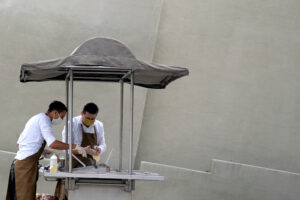How to stay one step ahead by reducing MRSA infection
The MRSA testing San Diego that happens in hospitals shows that a lot of people are infected. When it comes to fighting some serious infections, the efforts of providers and patients can sometimes take on some heroic proportions. This is true when there are high stakes and the infection isn’t eradicated easily.
Infections that are caused by bacteria are a practical case in point because they are challenging to cure as some strains have become resistant to antibiotics. While staph infections can start as mild infections, they can spread very quickly to produce potential fatal and extensive skin and tissue infections or through the blood to the bones, lungs, kidneys or heart. Staph infections are typically associated with suffering, high costs and death.
MRSA is the most commonly identified strain of staph that is resistant to most antibiotics and it is cropping up in hospitals. It has been labeled a superbug because it is resistant to a lot of antibiotics and is a formidable enemy.
MRSA is about 21/2 times more dangerous than infections that can be treated with methicillin and its incidence has significantly increased in the last decade. The most common sites for outbreaks of MRSA infection are the ICUs but MRSA can show up about anywhere in schools, hospitals, hotels and other public places. A separate strain known as community-acquired MRSA is also coming up more frequently in public areas, especially among people who work and live communally such as prisoners, athletes, military personnel and kids. That is why MRSA testing is very important in such places.
In 1974, two percent of staph infections were caused by MRSA infections. Today, the number has gone up to more than 60% of staph infections. Methicillin seems to be following the same path as its predecessor drug treating staph infections. For example, in 1950, penicillin was effective against all staph strains but by 1985, the drug was only effective against less than 5% of such strains. Right now, MRSA is resistant to penicillin and frequently to clindamycin, erythromycin, and other antibiotics as well. Some strains are resistant to vancomycin and one of the newest drugs, linezolid.
The high price
The financial and human toll that MRSA exacts is very high. Over 126 000 people hospitalized are infected annually.
How to stay ahead of MRSA
It is important for caregivers to use effective hygiene practices, decontaminate the equipment and the environment, perform surveillance cultures and use contact precautions for colonized and infected patients. They should also implement device bundles such as the Ventilator Bundle and the central line bundle. Hospitals that have systems to support these best practices have seen encouraging results.
Effective hand hygiene
As hospitals do MRSA testing San Diego to determine colonized or infected individuals and areas, proper hand hygiene is one of the most recommended methods of preventing the spread of MRSA. The importance of improving hygiene has become a priority at most hospitals in the US and this is because of the increasing awareness that compliance with the right procedures has been low in the past.






